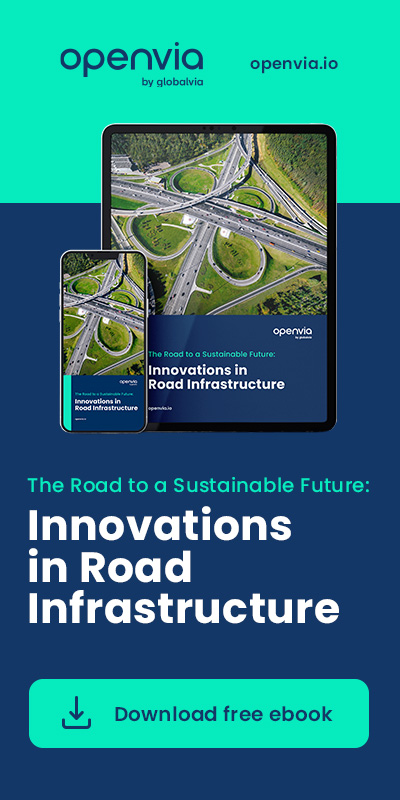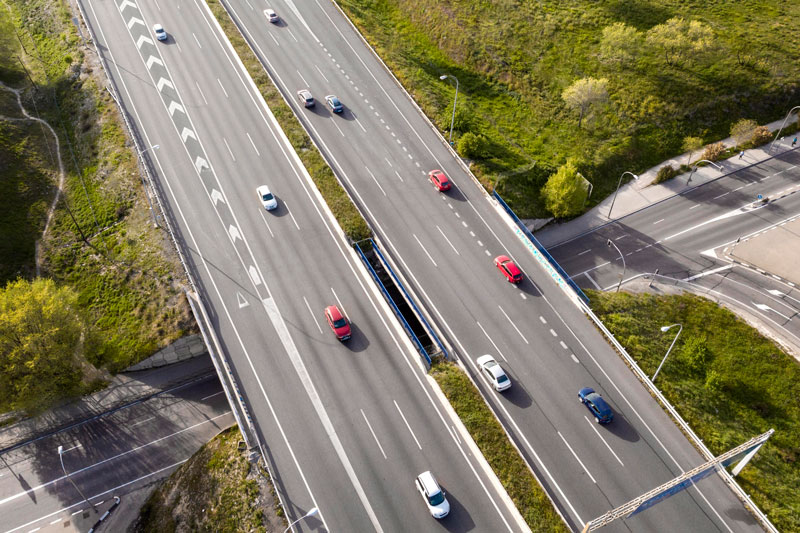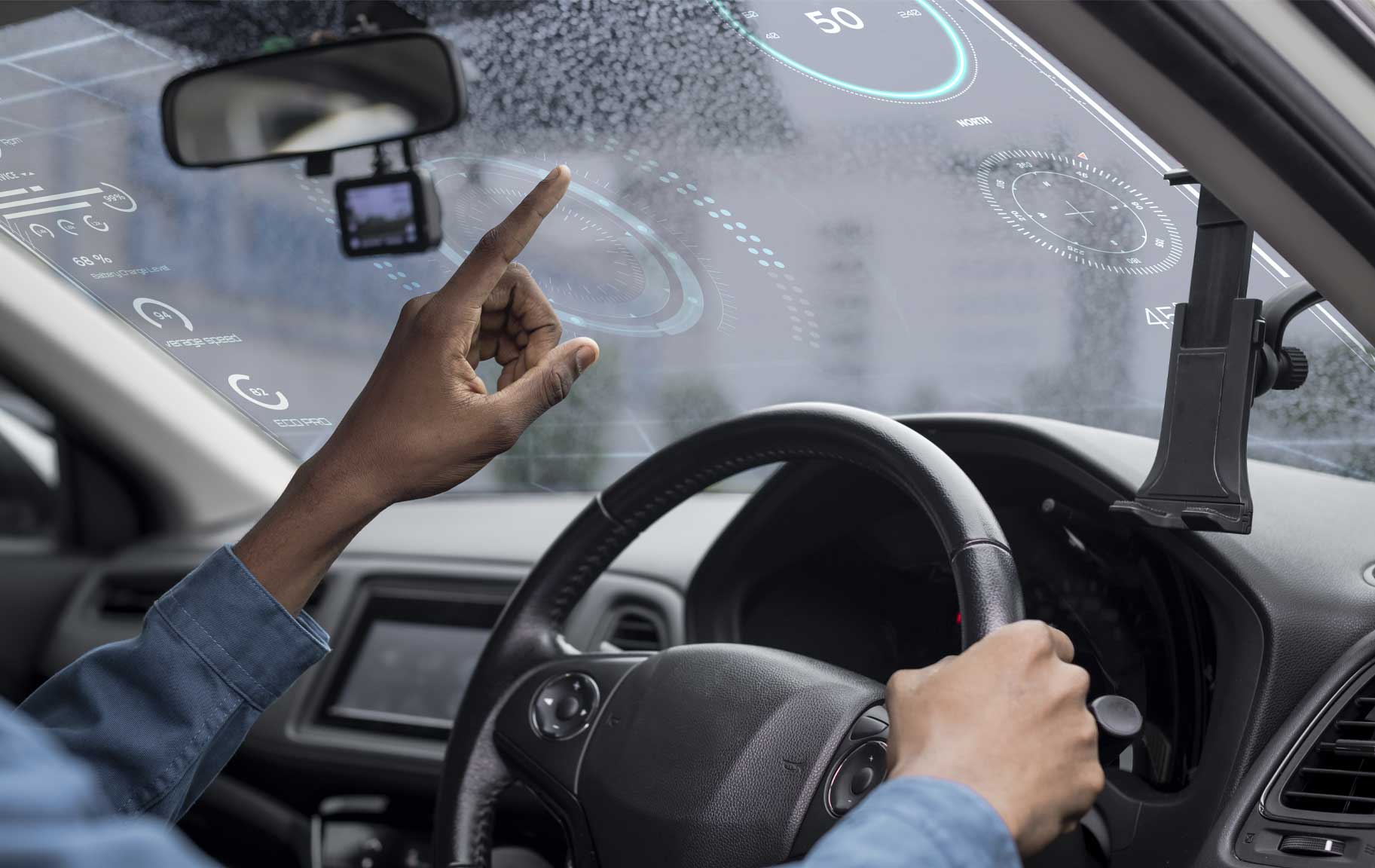2. New technologies applied to mobility
3. Latest developments in the mobility sector
3. Benefits of implementing new technologies in mobility services
Introduction
As technology continues to advance, it is also transforming the way we move and travel in urban and intercity environments.
From multimodal platforms and digital payment systems to autonomous vehicles and enhanced routes for people with reduced mobility. Technology is shaping the future of mobility towards a more accessible and pluralistic system.
New technologies applied to mobility
New technologies are helping mobility to reach new dimensions, to optimize models and to offer more sustainable and efficient mobility solutions.
Let’s take a look at how technological advances have been incorporated into mobility infrastructures, services and products.
5G mobile connectivity and IoT
The advent of 5G mobile connectivity and the widespread integration of Internet of Things (IoT) devices have ushered in a new era of innovation and accessibility in the mobility of today and the mobility of tomorrow.
5G technology, with its exceptional speed, low latency and high capacity, acts as a catalyst for the development of advanced mobility solutions.
This next-generation connectivity empowers urban transportation systems to offer instant and reliable data transmission. This translates into the ability to establish seamless coordination of various mobility services and real-time optimization of travel experiences for anyone.
The impact of 5G translates into the possibility of achieving intelligent urban mobility through real-time traffic management.
Similarly, the widespread implementation of sensors and IoT devices within the urban environment facilitates the collection of granular, real-time data. Data related to traffic patterns, air quality, pedestrian flows and infrastructure usage can be obtained.
This volume of data serves as the basis for informed decision making, based on real numbers rather than estimates.
With this information, government authorities and transport operators can adapt their services to maximize accessibility, safety and efficiency.
Through intelligent analytics and the use of IoT data, they will be able to address accessibility challenges, optimize transportation infrastructures, and offer personalized mobility solutions that are tailored to each individual.
Multimodal platforms and digital payments
The integration of multimodal platforms and digital payment systems provides users with a one-stop solution for planning, booking and paying for various modes of transportation. It opens up unified mobility management spaces with buses, trains, metros, ridesharing services and even micro mobility such as electric scooters and shared bikes.
Access to different transport services through a single digital platform has improved the overall travel experience for citizens, making it smoother and easier.
The use of digital payment systems has streamlined the transaction process, providing autonomy and reducing waiting times.
This technological solution not only saves time for users, but also contributes to a more efficient and cost-effective means of managing and operating public transportation systems.
In these environments, users can easily recharge their accounts, purchase tickets and access real-time information.
This compilation of services has significantly expanded the options available to people with diverse mobility needs. This represents a breakthrough in creating a more inclusive transportation system tailored to individual needs.
Maps and improvements for people with reduced mobility
Advanced mapping technologies, together with improvements adapted to the needs of people with reduced mobility, have brought real and effective progress:
- Providing detailed and accurate information on accessible routes, the location of elevators and ramps
- Availability of other essential facilities
- Designated parking spaces
- Accessible restrooms, etc.
The integration of real-time data into mapping applications helps people with reduced mobility make better decisions about their travel routes.
In addition, the development of navigation tools designed specifically for users with reduced mobility has further improved the accessibility of urban mobility.
Latest developments in the mobility sector
Among the most recent developments in the mobility sector, the following stand out:
- Vehicular communication, intelligent infrastructures and shared mobility.
- Algorithms and data for route optimization.
- Autonomous vehicles and delivery robots.
Vehicle communication and intelligent infrastructures
Seamless communication between vehicles, intelligent infrastructures and shared mobility services is generating an accessible and interconnected urban transport network.
Through vehicle-to-vehicle (V2V) and vehicle-to-infrastructure (V2I) communication technologies, urban planners can impact:
- Coordinating the smooth flow of traffic.
- Optimizing traffic signals.
- Improving safety and accessibility for all road users.
This interconnected ecosystem enables better decision making for users and mobility operators.
Algorithms and data for route optimization
The use of advanced algorithms and real-time data analytics is critical to optimizing the accessibility and efficiency of transportation networks.
By harnessing the power of artificial intelligence and machine learning, mobility agents can break down and interpret complex data sets. Coupled with this type of data, predictive algorithms and advanced routing technologies enable the proactive identification of potential accessibility obstacles and the formulation of adaptive strategies to address them.
By leveraging data-driven insights and smart route optimization algorithms, cities can achieve smart and sustainable mobility models.
Autonomous vehicles and delivery robots
The integration of autonomous vehicles and delivery robots into the fabric of urban transportation has opened new frontiers for improved accessibility and convenience.
Autonomous vehicles, equipped with advanced sensing and processing capabilities provide a safe, reliable and flexible mode of transportation. Their use generates the dual benefit of reducing congestion and improving accessibility in urban areas.
These are not only vehicles linked to ground transportation, but also include air mobility vehicles. The latter require reduced and highly optimized installations thanks to their vertical take-off and landing systems.
Through the combination of sensors and route planning algorithms, these delivery robots can navigate prioritizing pedestrian safety and accessibility. Safe and sustainable coexistence can be achieved.
Benefits of implementing new technologies in mobility services
In conclusion, the integration of new technologies such as artificial intelligence, IoT and cloud computing into mobility is revolutionizing the way we move.
Among the most obvious benefits are:
- The improvement of multimodal transportation planning systems.
- Optimization of time spent on mobility with the associated lower environmental impact.
- The creation of more accessible options for people.
- The creation of smart cities.
- Increasing safety in public spaces.
- The exploration of new forms of mobility.
- The promotion of electric mobility.
But this list is continually and constantly expanding.







